How to Create Central City Jobs
Northwestern Mutual's new tower is a shining example of how to create jobs in city.
There might not be a better example of the disparity between the gridlock in Washington and the ability of local politicians to get things done than what played out in downtown Milwaukee Tuesday afternoon. While Donald Trump‘s motorcade rolled by Northwestern Mutual‘s 32-story tower project, blocking several streets, the insurance company was prepping inside for a ceremony to recognize 70 previously unemployed (or underemployed) central city residents who now have family-supporting jobs through the company’s $450 million office tower project.
Sandy Botcher, NM’s vice president, kicked off the ceremony by stating “welcome to the first party at Northwestern Mutual’s new tower.” And while most parties the company throws undoubtedly involve suits and ties, this party had a distinctly hard-hat-and steel-toed-boots aesthetic. Held in the lobby of the three-story “Commons” portion of the new tower, employees of Duwe Metal Products were one-by-one called to the stage to receive a plaque recognizing their work on the project.
Adam Jelen of Gilbane, who leads the general contracting work on the tower along with Rick Schmidt of CG Schmidt, praised the work done by those in attendance, while encouraging them to stick with it to the finish. Jelen declared “it is not just about this job, it is about building to the future,” while encouraging all of the recognized members to attend WRTP/Big Step’s next job fair. He praised the success the partnership has already seen, with four workers placed into apprenticeship programs and three more on their way to becoming iron workers.
While in many cases the glass panels would be shipped long distance from a remote factory, Duwe and Benson Industries teamed up to create a custom fabrication shop in the city’s Century City business park. Benson leased 83,000 square-feet of space in the building previously occupied by Spanish-firm Talgo at 3533 N. 27th St. Talgo used the facility to assemble passenger train equipment for Oregon and Wisconsin before leaving town in 2014 following the termination of passenger rail expansion by Governor Scott Walker. The workers recognized in today’s ceremony spend the majority of their time working in Century City location, not on-site at the tower.
While thanking the celebratory employees, Jelen noted that “there is no way any one firm could make this happen,” ticking off the many project partners including WRTP/Big Step, Milwaukee Building Trades, the glaziers’ union and the city. The local hiring plan, which will ultimately exceed over 100,000 hours of work, was formulated in 2014. Local hiring beginning in 2015 to execute the fabrication work on 2,800 glass panels that, in total, would cover the surface of 6.8 football fields. To date 2,200 panels have been completed.
About RRP
As part of the developer-financed, tax-incremental-financing district created for the project, the insurance company pledged to have at least 40 percent of the hours worked on the project by done by Milwaukee residents hired through RPP. As of March, the RPP workers had completed more than 44 percent of the construction hours on the project.
Workers wishing to become RPP-certified must live in the city of Milwaukee, and have been laid off for 30 consecutive days or worked less than 1,200 hours in the previous year.
Photos
Project Details
Design work on the Northwestern Mutual Tower and Commons is being led by architecture firm Pickard Chilton, with general contracting work taking place under the guidance of a partnership of Gilbane Building Co. and C.G. Schmidt Inc. When complete, the tower and commons will include 1.1 million square-feet of space, with the public being able to access the commons portions along E. Mason St.
Construction on the building is expected to be completed in 2017.
Northwestern Mutual Tower and Commons Renderings
If you think stories like this are important, become a member of Urban Milwaukee and help support real, independent journalism. Plus you get some cool added benefits.
Political Contributions Tracker
Displaying political contributions between people mentioned in this story. Learn more.
- November 14, 2018 - Tom Barrett received $1,000 from Adam R. Jelen
- June 25, 2018 - Tom Barrett received $400 from Adam R. Jelen
- March 9, 2016 - Tom Barrett received $200 from Rick Schmidt
- December 15, 2015 - Tom Barrett received $400 from Rick Schmidt
Eyes on Milwaukee
-
Church, Cupid Partner On Affordable Housing
 Dec 4th, 2023 by Jeramey Jannene
Dec 4th, 2023 by Jeramey Jannene
-
Downtown Building Sells For Nearly Twice Its Assessed Value
 Nov 12th, 2023 by Jeramey Jannene
Nov 12th, 2023 by Jeramey Jannene
-
Immigration Office Moving To 310W Building
 Oct 25th, 2023 by Jeramey Jannene
Oct 25th, 2023 by Jeramey Jannene


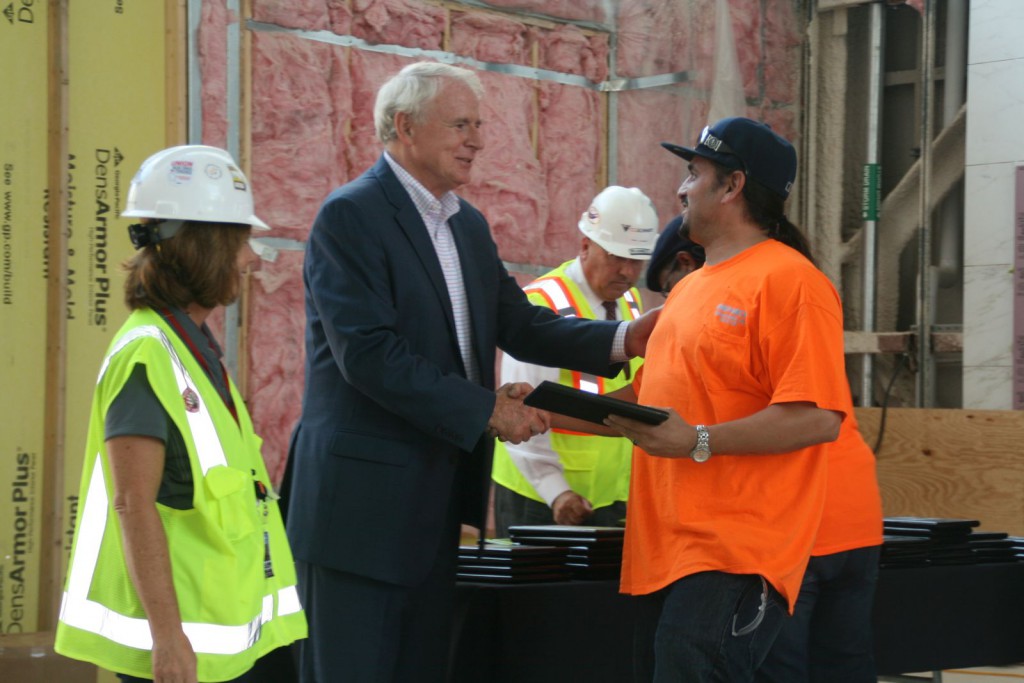
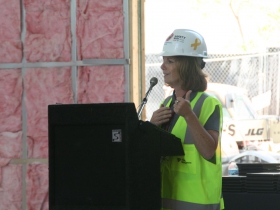
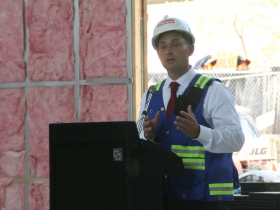
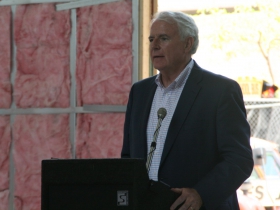
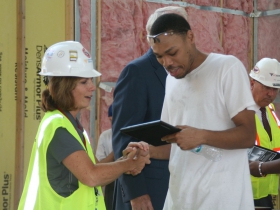
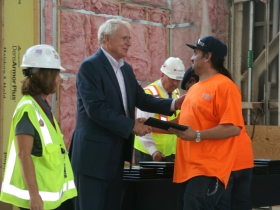
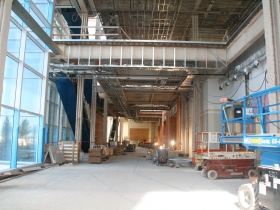
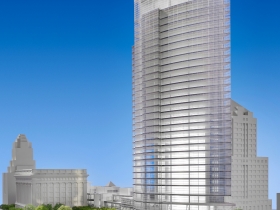
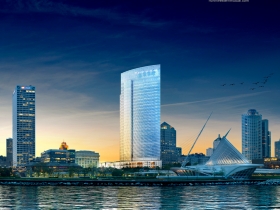
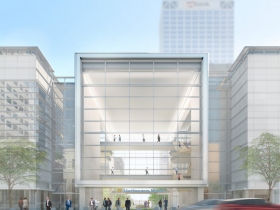
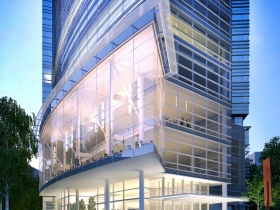
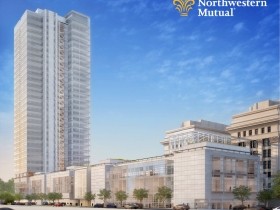
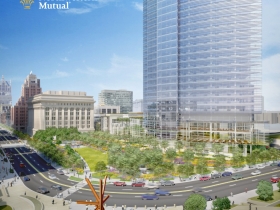


















While this is commendable, the metro area needs to generate THOUSANDS of permanent jobs to put a dent in the black unemployment and poverty rate.
I agree with Sam. It should also be noted that NML is receiving $54 million in direct tax-incremental-financing credits from the city, plus the city allocated $18 million for additional street infrastructure changes. $73 million is a big number.
For decades, city policies have subsidized big developers and downtown projects. Though everyone has said that will “trickle down” throughout the city, so far there’s been little trickling.
What other plans are there for creating central-city jobs?
@M – Two important things there.
1. Northwestern Mutual’s TIF is developer financed. They’re in essence fronting the cash in exchange for a property tax break in the future. The risk to the city in that deal is essentially non-existent, unlike virtually all other TIFs. If, as claimed by the city and NM, the TIF was necessary to balance the costs between developing downtown versus Franklin (or other sites), it’s an incredibly low price to pay.
2. The presence of the TIF is the only legal leverage the city has to mandate the local hiring program. As the recent debate around 1550 N. Prospect Ave. proved, the developer can offer an RPP hiring goal, but the city would have no legal means to enforce it. Expect the enforcement of TIF RPP hiring to become a bigger issue going forward, as at least one project (MKE Lofts) missed their target, but faces almost no punishment.
@Sam – Absolutely. The big question is how to take this from 70 to 700 people (and then beyond).
@”M” This narrative: “For decades, city policies have subsidized big developers and downtown projects,” implying the city has ignored the neighborhoods is just not correct. The city uses TIF (it’s biggest tool for development) in neighborhoods throughout Milwaukee.
Take a look at the list of TIFs http://city.milwaukee.gov/MilwaukeeTIDprojectsummaries.htm#.V7SiPlsrJ9M
PS The $18 million is for city improvements.
Wasn’t Harley suppose to relocate their insurance or financing offices from Chicago to the north west corner of 6th and Canal? If the city can’t even get that done anyone who thinks that the city can magically bring in 1000s of jobs to the northside is off.
Here’s an article on the City’s actual plan for central city jobs:
http://urbanmilwaukee.com/2014/09/09/corridor-of-dreams-can-30th-street-corridor-be-reclaimed/
Along with the State’s Transform Milwaukee plan. The dollar expenditures are at Page 39. Note that $30 million went to the downtown Hilton, and $20 million to the Reed Street Yards. Nothing has been spent on commercial/industrial development in the 30th Street Corridor or Riverworks. Also note the poverty map at Page 35, which shows that the 30th Street Corridor and Riverworks are adjacent to the high poverty areas.
http://transformmilwaukee.com/uploadedFiles/_Documents/FINAL-TMSAP-4-30_compressed.pdf
http://transformmilwaukee.com/uploadedFiles/_Documents/FINAL-TMSAP-4-30_compressed.pdf
“Nothing has been spent on commercial/industrial development in the 30th Street Corridor or Riverworks.” Although Transform Milwaukee (a state ‘plan’) from what I can see hasn’t done much (Reed Street Yards was good). The city certainly has spent money in the 30th Street Corridor (in fact mentioned in this story).. Note: http://city.milwaukee.gov/ImageLibrary/Groups/cityDCD/business/TIF/2015-Reports/TID74.pdf
Jeramey, you said the $54 million TIF “incentive” for NML may be an “incredibly low price to pay.” However, that $54 tax rebate, along with the $18 for other improvements in the area, is the largest TIF in the city’s history. Will it become the norm for other businesses to demand high TIF incentives to rebuild in the city? And it will be future officials problem that NML won’t pay city property tax for roughly 25 years.
Weren’t TIFs originally meant to spur development in truly blighted areas? I know there are TIFs in other parts of the city but much of Milwaukee has been spiraling downward for decades. Who has real plans to reverse that, how much might it cost, and who will fund such initiatives?
I’m glad that downtown and lake-adjacent neighborhoods are on the rise. But Milwaukee will not be a sustainably strong city if huge swaths of it remain blighted or worse. It will take more than action by city officials to solve this but why has so little progress been made?
@M – It may be the biggest TIF in the city’s history, but again the $54 million is developer financed. If employers line up for developer-financed TIFs to expand in the city, the city will likely accept each and every one of them. It’s hard to come up with a scenario where they’re a bad deal for taxpayers. The risk is all on the developer. It also allows the city to enforce RPP hiring.
Yes, the city will have to forego approximately $54 million in incremental tax revenue. In exchange, NM invested $450 million in the city, not in Franklin. A good trade-off.
The other $18 million, made possibly solely by Northwestern Mutual’s new tower, will finance things like parks, bike sharing, road repaving and a host of other public infrastructure improvements. That’s not a subsidy to NM. That’s the city cleverly extracting value from the tower before its even finished.
Turning down the NM deal would not have improved the rest of the city, it would have hurt it. It’s not a deal made in a vacuum either. If Milwaukee didn’t make the deal, someone else would have (i.e. how the city lost out to Menomonee Falls in the Kohl’s deal).
As to why “so little progress has been made” by “city officials,” I think they would argue they’re not sitting on their hands doing nothing. For example, they successfully recruited Talgo and approved a TIF to improve to create the Century City development. A great first step, with a tenant in hand. I don’t think they expected to be thwarted by the state.
So when you say “there’s been little trickling,” I would disagree in this case. This specific TIF created at least central city 70 jobs and generated a whole new model for future TIFs to create more.
Yes, the city need thousands more jobs. But there unfortunately aren’t employers looking to relocate that will offer thousands of jobs, at least not if they’re outrageously subsidized. With that, the journey to create thousands of jobs starts by creating one.
And I’d add “M” TIFs payback $6 for every $1 invested in Wisconsin (even with suburban TIFs dragging this number down!).
I may be mistaken, but wasn’t the Northwestern Mutual TIF set up so it is only on the increased portion of the taxes? So they’ll continue to pay property taxes at the level they had been paying before the new building. Thus the city is continuing to see the same revenue stream and only the increased value of the property is the part repaying the TIF.
We must sustain these jobs. Governments can issue 30 year bonds at virtually zero interest. $100 million in government housi ng money would have a fixed interest of $833,000 per year. The returns would accrue immediately through wage tax, sales taxes and rent.
The $18 million is being spent for street improvement as part of the Lakefront Gateway Project. Not improvements throughout the city. The Redevelopment Authority has voted and forwarded a recommendation to the Common Council that this amount be increased by another $6 million. Coupled with the $4 million being spent under TID 78 to improve the streets around NML, the City is spending a total of $28 million for infrastructure at the lakefront and around NML. Add in the $50 million tax rebate to NML, and the total is $79 million.
http://city.milwaukee.gov/ImageLibrary/Groups/cityDCD/business/TIF/2015-Reports/TID78.pdf
http://city.milwaukee.gov/ImageLibrary/Groups/cityDCD/RACM/061616Resolutions/061616-10626.pdf
@James Correct… My point was that $18 million is for the benefit of Milwaukee, not just NM.
@ Dave Reid – I do not disagree. I also do not disagree that the NML project will benefit Milwaukee in terms of not only jobs, but also a landmark building and Fortune 100 headquarters. But I also think that if $54 million can be spent for NML’s 3,000 white collar jobs promised by 2030, then the City can invest more than the $26 million (out of a $40 million total) spent to date on Century City.
http://city.milwaukee.gov/ImageLibrary/Groups/cityDCD/business/TIF/2015-Reports/TID74.pdf
Offering a $25 million tax rebate if 3,000 jobs are created by 2030, might expedite occupancy of the completed building at Century City and sale of the remaining 45 acres. Right now, the City is only seeking 15 jobs / acre, which equals 675 jobs.
http://www.bizjournals.com/milwaukee/blog/real_estate/2016/04/milwaukeemayor-barrett-amps-up-job-creation.html
Direct heavy rail access is not that common, and Chicago’s rail yards are congested.
@James TIF is just one source of funds the city has used in Century City. New Market Tax Credits, Brownfield grants, MEDC loans and so on have been used as well so the actual number is higher than $26 million. And there is no doubt that as more projects come along (like in the valley) more funds will be used (likely TIF) to make it happen.
I’m not sure what this means: “Offering a $25 million tax rebate if 3,000 jobs are created by 2030.” What exact tool could the city use here? TIF? If so there’s no doubt that if this deal was proposed by some company it would be passed by the council and signed by the mayor. But is it even realistic? Doesn’t seem like it.
TIF’s are the biggest scam going around. They do nothing but provide not-so-well financed developers to take on projects that are simply not feasible and allow those developers to cash out early, leaving the city with nothing but a shortage of tax revenue. Deferring what they pay bleeds financial resources the city needs, all while these areas suck city resources for years before paying back a dime. And then, 25 years from now, these developers will have their hands out again saying they need x dollars for “upgrades” or to maintain the value of the property, kicking the can down the road. And “jobs creation”…oh please.
A simple example is this. My house needs a new roof and siding. So I ask the city to create a TIF to help me pay for a new roof and siding because I’m “creating” jobs by hiring people to install these products. Of course, I need to do this with or without the help of the city but hey if they will pay for it, great deal. So the city provides me say, 25% of the homes value in the form of a TIF and I get to pay it back over 20 years from my property taxes. Well now for 20 years, my property taxes are being diverted to pay back the very short term temp jobs I created but hey, I’ve kept something on the tax rolls and the politicians can say this is a “victory” for the city.
In reality, I’ve just taken revenue that would have otherwise went to the city to pay for schools, police, roads and instead it’s going into my pocket instead. But hey, I “created” some jobs along the way…
What a house of cards…
Sean (post 17), you misunderstand how this TIF works.
To illustrate this, assume you somehow got the same deal NML did to re-side and re-roof your house. (You wouldn’t, in part, because your work would not provide any permanent in-City employment and because sooner or later you would do the work anyway; there was no assurance NML would do anything without the TIF.)
The City would not provide you with any money; you would pay the roof and siding expenses yourself.
You would then get a slight reduction in property taxes for up to 25 years. How “slight”? Assume the following…
Your house was assessed at $200,000 before your new roof/siding.
Your house was assessed at $210,000 after your improvements.
You would pay property taxes based on a $203,000 value (the pre-improvement $200,000 plus 30% of the added assessment). If your property value went up to $230,000 the next year, you would pay based on $209,000.
Those tax savings would continue until they totaled the cost of your roofing/siding or until 25 years (whichever came first).